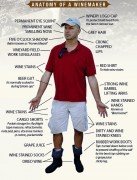A Bright Future for Temecula Valley Southern California Wine Country
Get to Know the Next Generation and Youngest Rising Stars of This Top Wine Destination
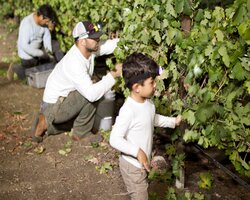
While many think Temecula Valley is a relatively young wine region, this Southern California wine hot spot actually celebrated its 50th anniversary in 2018! In fact, Temecula Valley has been around long enough now that the next generation of winemakers and winery employees are starting to leave their mark on this dynamic wine destination. It’s not uncommon to see multiple family members working at the same winery, sons and daughters learning the ropes and making wines alongside their parents, and young, fresh-faced winemakers just starting out in their careers staining their hands purple in the cellar.
From Temecula Valley Wine Country pioneer Phil Baily’s 24-year-old grandson Alex, who is an integral part of the Baily harvest crew alongside Phil and Phil’s son Patrick, to Nick and Cindy Palumbo’s son Reed who has been put to work in all aspects of the winery, vineyard and production at Palumbo Family Vineyards & Winery, to second generation winemaker Damian Doffo’s very young children who are regularly seen playing amongst the vines and at the winery, the future is bright Temecula Valley! Passionate winemakers, winery owners, and staff of all ages are all bringing a touch of magic to the region that Wine Enthusiast Magazine called one of the Top 10 Wine Destinations in the world in 2019.
We caught up with a few of Temecula’s youngest winemakers and next generation winery employees to learn what it’s like not only to work with family, but to be the faces of the future of Southern California Wine Country.
Jeff Carter, President of Carter Hospitality Group
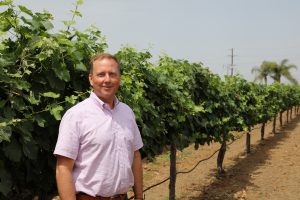
Jeff is the son of Jim Carter, founder of Carter Hospitality Group and South Coast Winery, celebrating its 20th anniversary this year. Jeff was originally the CFO for Carter Hospitality Group from 1998 to 2011, ultimately becoming president in 2011.
TVWA: What is it like working with family?
JC: Working with family can be a blessing and a curse. While we have many common goals to help the business succeed, we sometimes have different approaches. Since we’re more familiar, we can be and are more direct with each other versus a traditional corporate business setting. At the end of the day, we are family and work through those differences, ultimately bringing everyone closer together. Having lost my mother when I was 24 years old, I am thankful for the time spent with my father working on new endeavors. I hear so many people wishing they had spent more time with their loved ones; I get to do that on a daily basis.
TVWA: Do you see any differences in the way you and the next generation of winemakers and wine country personalities approach business, the community, and winemaking when compared to previous generations?
JC: I think we are starting to see some of the transition from one generation to the next and I am not yet sure how it will all work out. Will the new visions of the next generation turn into reality, or will time and experience build an appreciation for what the first generation has built? I believe the next generation of winemakers will continue to create one-of-a-kind experiences for the public, just as the first generation did. The next generation has newer technologies and data to refine the quality of the wines and are able to cast a larger net outside of Southern California – which is exciting to see.
TVWA: What do you see for the future of Temecula Valley Wine Country?
JC: Temecula Valley continues to build a stable of serious wineries making amazing and complex wines. I see Temecula Valley Wine Country expanding its presence in wine consumers’ minds and hearts, whether that is pulling in guests to the valley from a larger geographic area or putting a bottle of wine on their dinner table 3,000 miles away. Temecula has matured as a wine destination and wine aficionados across the country will continue to take notice.
Joseph Wiens, Winemaker, Wiens Family Cellars
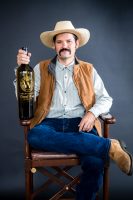
Joseph Wiens is one of about ten other members of the Wiens family that work at the winery. He followed in his father and founding winemaker Doug’s footsteps, and has been the head winemaker for nearly 11 years now.
TVWA: What is it like working with family?
JW: Overall, it’s been great. Our (huge) family all has special strengths in their positions, and we all work together to make sure our guests enjoy their time with us. We have a tradition at our winery that gives the winemaking staff relative autonomy over our winemaking program, which is very freeing, and allows our creative sides flourish. Also, sometimes we fight (just like any other family).
TWVA: Fighting in any family is to be expected! At least you have wine to get through it. Do you see any differences in the way you and the next generation of winemakers and wine country personalities approach business, the community, and winemaking when compared to previous generations?
JW: The younger generation pushes to try new winemaking techniques, less traditional blends, and branding that resonates with our generation. Since we have so many age groups involved at our winery, we tend to diversify our portfolio of offerings, which translates into a wine list that appeals to a very wide audience.
TVWA: What do you see for the future of Temecula Valley Wine Country?
JW: I see more of the younger generation getting involved with winemaking and ownership. That will help to keep Temecula Wine Country fresh, exciting, and relevant as a Southern California destination.
With so many family members working alongside you, you must have some great stories to tell! Can you share?
JW: Although we’re a big, diverse family, we always get together for family gatherings. Once the adults have enjoyed enough beer and wine, they challenge each other to a “feats of strength” game called leg wrestling (which looks as strange as it sounds). Basically, two people lay on their backs and try to flip over the other person, using only their leg. My uncle, Big Dave was the final boss, and to my memory, has never been beaten.
Damian Doffo, CEO & Winemaker, Doffo Winery
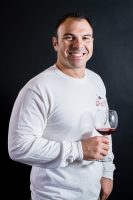
Damian is the 37-year-old son of Marcelo Doffo, who purchased the land and planted vines in 1994, and wasted no time involving the whole family in the business, including Damian and his sisters Brigitte and Samantha. Damian has been the winemaker for 12 years, and also became CEO five years ago. Big sister Samantha is in charge of events and tours for the winery, and Damian’s other sister Brigitte handles all things related to design, merchandise, and aesthetic for the business.
TVWA: What is it like working with family?
DD: We love it! Our inside joke is that we even hang out after work. That’s how you know we really like each other!
TVWA: What is it like being among the youngest winemakers in Temecula?
DD: I feel very lucky to be in the Temecula Valley amongst great company of young, talented winemakers. It’s been fun watching my peers develop and produce some amazing wines in the Valley.
TVWA: Do you see any differences in the way you and the next generation of winemakers and wine country personalities approach business, the community, and winemaking when compared to previous generations?
DD: The next generation is putting their twist and mark on the valley. I believe that this last year really put some separation between the wineries that pivoted and adapted versus those that bunkered down and went static through the pandemic.
TVWA: What do you see for the future of Temecula Valley Wine Country?
DD: I see Temecula continuing to create its own legacy in the wine world. Our model doesn’t conform to the norms, but it’s working for us! Temecula needs to own its diversity and its tourism appeal and run with it! Celebrate the uniqueness of what our small slice of heaven offers the world.
Justin Knight, Winemaker, Danza del Sol Winery & Masia de la Vinya Winery
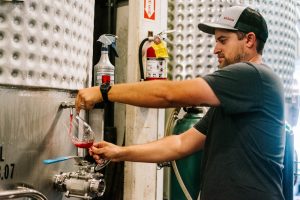
Justin’s first job in wine was in the tasting room at Danza del Sol Winery over 12 years ago, where he first developed an interest in the production side of the business. After working under then-winemaker Mike Tingley and assistant winemaker Renato Sais, he learned the ropes, ultimately being promoted to head winemaker for both Danza del Sol and sister property Masia de la Vinya in 2018.
TVWA: What is it like being among the youngest winemakers in Temecula?
JK: I wouldn’t want to be a “young winemaker” anywhere else. Being an up-and-comer in most industries can be an intimidating time, but the previous generation of winemakers has set a strong foundation which has allowed the beginnings of a new generation to come and thrive. There is also more of a camaraderie factor in the valley, that I don’t believe is as strong in many other regions.
TVWA: Do you see any differences in the way you and the next generation of winemakers and wine country personalities approach business, the community, and winemaking when compared to previous generations?
JK: Experimentation is one word that comes to mind in searching for differences in winemaking styles between generations. I think the younger generation will be more likely to experiment as they try and find a style of their own. Personally, I pull a lot of inspiration from the “old school” winemaking techniques that I learned from my predecessors, while also using a fair amount of “new” practices in order to make the best quality wine I can.
TVWA: What do you see for the future of Temecula Valley Wine Country?
JK: I see Temecula continuing to grow and getting more world recognition as our region’s potential is fully realized.
Spenser Epperson, Sales Associate, Wiens Family Cellars

Spenser’s mother was the first non-family employee at Wiens. She started out as a sales associate in the temporary tasting room trailer while the family was building what is now the winery’s main tasting room, ultimately becoming an assistant manager before retiring ten years after she started. Spenser has been a sales associate at Wiens for two years now.
TVWA: Do you see any differences in the way you and the next generation of winemakers and wine country personalities approach business, the community, and winemaking when compared to previous generations?
SE: There has been noticeable change in the level of service expected, as well as amenities desired over the last 15 years or so. Many tasting rooms in the Valley were a belly-up style, and more informal for many years. With the change of guard, so to speak, the expectations are different, and many wineries have changed to meet demands like table service, on-site restaurants, and other amenities.
TVWA: What do you see for the future of Temecula Valley Wine Country?
SE: I believe Temecula is beginning to find itself with regard to what grape varieties can thrive and evoke a sense of place in our warm and arid climate. We are in the very early stages of transformation from a weekend destination to a serious wine region as the next generation of winemakers apply new ideas and begin to assert a more dominant role in the valley.
Meanwhile, my generation is beginning a transformation of their own. I feel my generation is much more open to new experiences. While my parents would stick to ordering a Cabernet Sauvignon or Chardonnay on a wine menu, my generation is much more open to new experiences, and is willing to try more esoteric grape varieties on a wine menu. They are also beginning to reach that age when my own parents began to discover wine. It is only a matter of time before these trends converge. When that happens, watch out!
TVWA: It’s great that Temecula Valley is home to so many unique grape varieties in addition to the classics! Can you share any funny stories from your experience working at Wiens?
SE: My mother once brought home a 2012 Grand Rouge (The Wiens Family flagship wine) for me to try. She opened it and left it on the counter. I found it and thought it was left out overnight, so I dumped it down the kitchen sink! Needless to say, I was sad when, years later, I finally had a chance to taste how good it is. We now laugh when we remember that story.
Olivia Bue, Winemaker, Robert Renzoni Vineyards
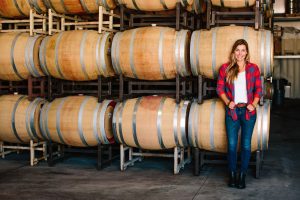
Olivia has been part of the winemaking team at Robert Renzoni Vineyards since 2014, becoming head winemaker in 2017. Her passion and commitment to quality have contributed in no small way to the large number of 90+ point scores Robert Renzoni wines have received over the years.
TVWA: What is it like being among the youngest winemakers in Temecula?
OB: Honestly, I feel like I have a lot to live up to being among the youngest in the valley and surrounded by many incredibly talented winemakers here who have been making wine for decades. I have definitely leaned on them through the years to fully understand this region’s idiosyncrasies. When I first began working in Temecula Valley as a 23-year-old, I dreaded when people asked me my age, but here I am 9 years later and feel so proud of this opportunity to grow with the wine region.
TVWA: Do you see any differences in the way you and the next generation of winemakers and wine country personalities approach business, the community, and winemaking when compared to previous generations?
OB: The next generation of winemakers may be a bit more adventurous with old school winemaking philosophies. I think it’s great to see young adults enthused about wine, so our market is much bigger now than it was two decades ago. We younger winemakers are able to connect with that audience as well as the older consumers.
TVWA: What do you see for the future of Temecula Valley Wine Country?
OB: The main goal is for Temecula Valley to get recognized for quality winemaking beyond just Southern California. Seeing visitors specifically flying into Southern California to come spend a weekend in the beautiful Temecula Valley is so exciting. The unity this region has among the winery leaders is incredibly special.
Dakota Denton, Winemaker, Gershon Bachus Vintners

Dakota Denton is the 35-year-old winemaker at the picturesque Gershon Bachus Vintners along the De Portola Wine trail, where he has been working in winemaking since 2013.
TVWA: What is it like being among the youngest winemakers in Temecula?
DD: Being a young winemaker I find that people are surprised about my age, and time spent working for Gershon Bachus Vintners. It’s been amazing to be able to work with some of Temecula’s great winemakers at such a young age. I was lucky enough to start working full-time in production at the age of 20. The amount of support I have received from the winemakers before me and the encouragement to keep on pursuing my dreams has helped me meet my goals at a young age.
TVWA: Do you see any differences in the way you and the next generation of winemakers and wine country personalities approach business, the community, and winemaking when compared to previous generations?
DD: As for winemaking, I’m going to have to say no, because the wine industry is constantly updating and innovating; so, as a winemaker – young or old – we are constantly trying to keep up with the times, and the best winemaking procedures to make the best product we can.
TVWA: What do you see for the future of Temecula Valley Wine Country?
Growing up in Temecula, I’ve been able to see wine country grow and grow, and the wine get better and better every year. Temecula Valley Wine Country is producing world class wines, and, as young winemakers, it’s our job to keep the quality next-level.
TVWA: Got any stories from when you were just starting out in the business?
DD: During my first production job on a hot summer day during harvest, the cellar crew and I got in trouble at work for starting a water fight that went on for about 10 minutes – all of us just spraying each other with hoses and dumping buckets of water on each other. It was a blast.
Photos courtesy of Carter Hospitality Group, Doffo Winery, Wiens Family Cellars, Danza Del Sol Winery, Robert Renzoni Vineyards and Gershon Bachus Vintners.

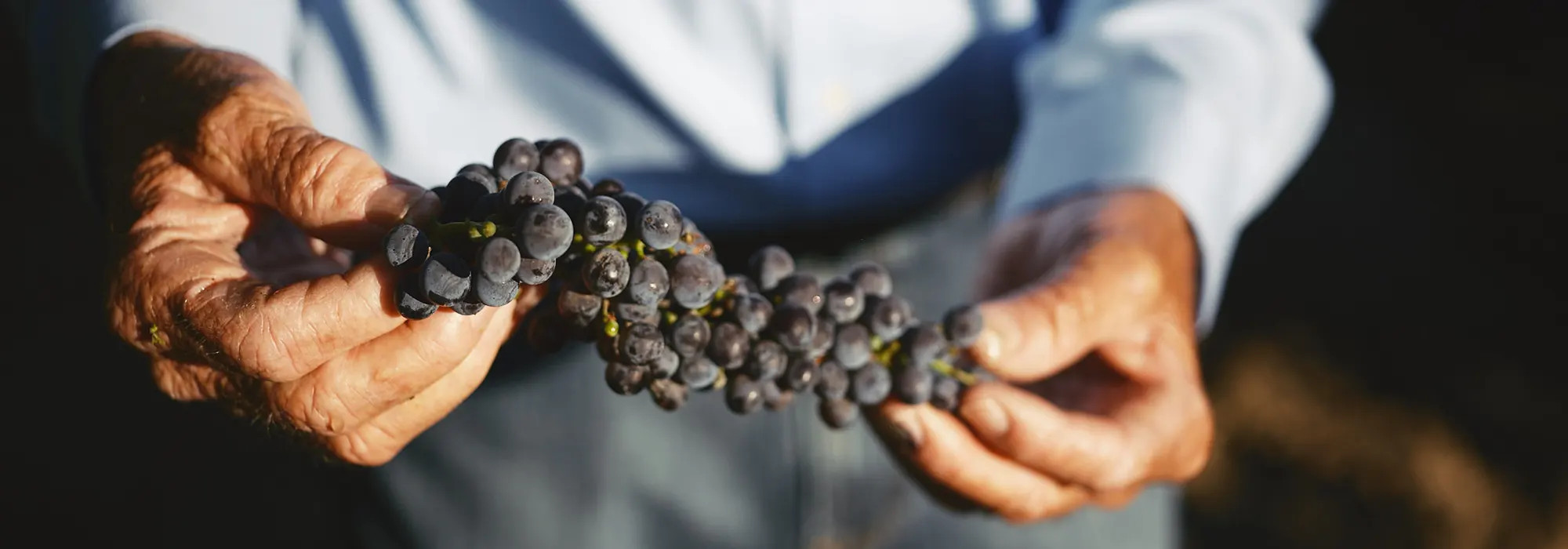

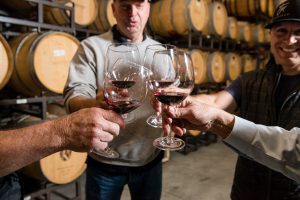

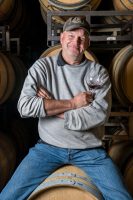
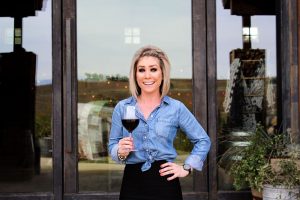


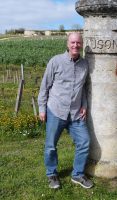


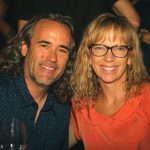
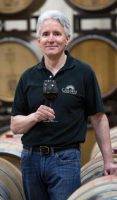
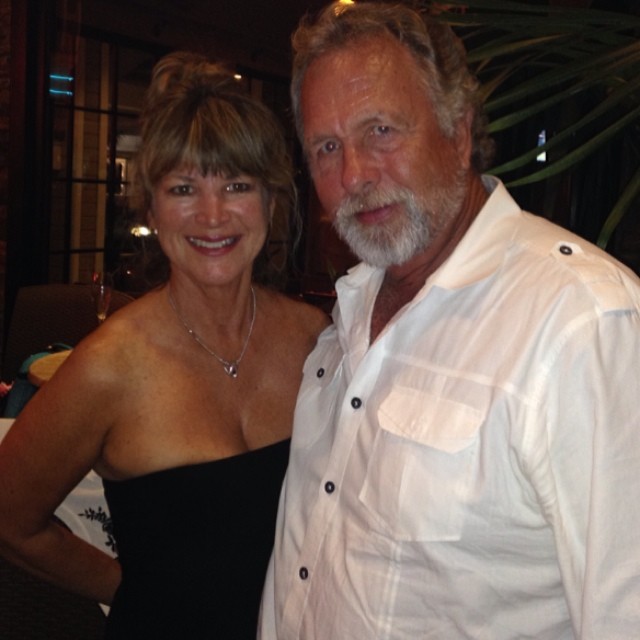
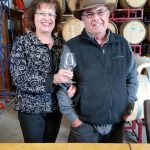
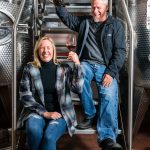
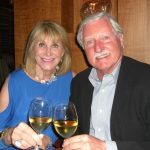

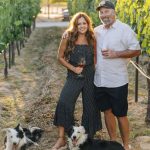
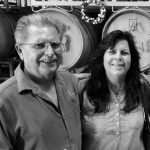
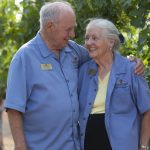

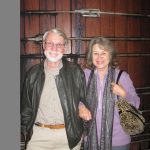

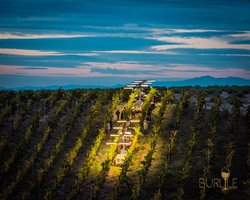 You sit down to dinner and uncork a beautiful bottle of 2014 Syrah. As you swirl and sip, you start to imagine life as a winemaker. The romance of waking up on a cool September morning, opening your blinds and looking out onto your perfectly manicured vineyards. The satisfaction of tending to your vines, watching them flourish, and ultimately fermenting and bottling the grapes for your family dinner table.
You sit down to dinner and uncork a beautiful bottle of 2014 Syrah. As you swirl and sip, you start to imagine life as a winemaker. The romance of waking up on a cool September morning, opening your blinds and looking out onto your perfectly manicured vineyards. The satisfaction of tending to your vines, watching them flourish, and ultimately fermenting and bottling the grapes for your family dinner table.